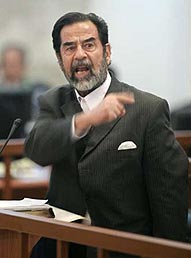In case of Chandramohan, it is Hindu and Christian mythological imagery that the fellow used to put his point across, whatever that may be. Now, if he intended to hurt religious feelings, his right to freedom has to give way to the right to religion. He made the painting that he intended to make, and he should have known that his depiction of the Hindu gods and goddesses in their questionably naked form was very much likely to offend the Hindus. So, this knowledge makes him guilty unless it could be shown that he indulged in high artistic pursuit that did not leave him with any other option but to portray the gods the way he did. In short, the point he wished to make could not have been as effectively made otherwise. When, say, Hindu mythological figures are used, the intention quite clearly is to communicate to the people belonging to that particular community primarily. And art not only entertains and amuses but also provokes, questions and initiates debates. That is permissible even if the debates relate to religious practices or notions. What is not permissible is offending the religious feelings and taking the defence of ‘art for art’s sake’. The defence is not available when it comes to someone’s religious feelings because it is permitted for art to anger, sadden and provoke thought but not to hurt one’s deeply held religious beliefs because that would be stretching the artistic license a bit too far.
Time and again, the ancient Indian erotic writings and sculptures – like Kamasutra and Khajuraho – are pressed in defence of art and we are told that our forefathers did not mind it, why are we taking offence of such things? Well, our forefathers walked around in their birthday suits, too. They wore leaves and may be some of them lived on trees and survived on bananas. So, shall we, too? The neo-liberals, so to speak, argue that nudity and eroticism has been a part of Indian culture. So, it is prudish for us to feel offended now. Societies change and so do their values, and that’s perfectly all right. What was acceptable then may not be acceptable now, and this position is perfectly acceptable. Even if we as a society have become more conservative now, we have every right to be that way. We were conservative then in many respects, and if we are conservative regarding other things now, it is the way civilization evolves. The values prevalent then governed the society then, our values of the day govern things today. There cannot be a selective application of past value system and attitudes. The argument that we are more conservative now is, therefore, absolutely pointless. If we are, so be it.
Now, if Chandramohan’s intention was to express in order to communicate, he should have taken a non-offensive approach, and if he wished only to offend, he is clearly guilty of deliberately hurting the religious feelings of at least two communities. There is no morality involved here.





